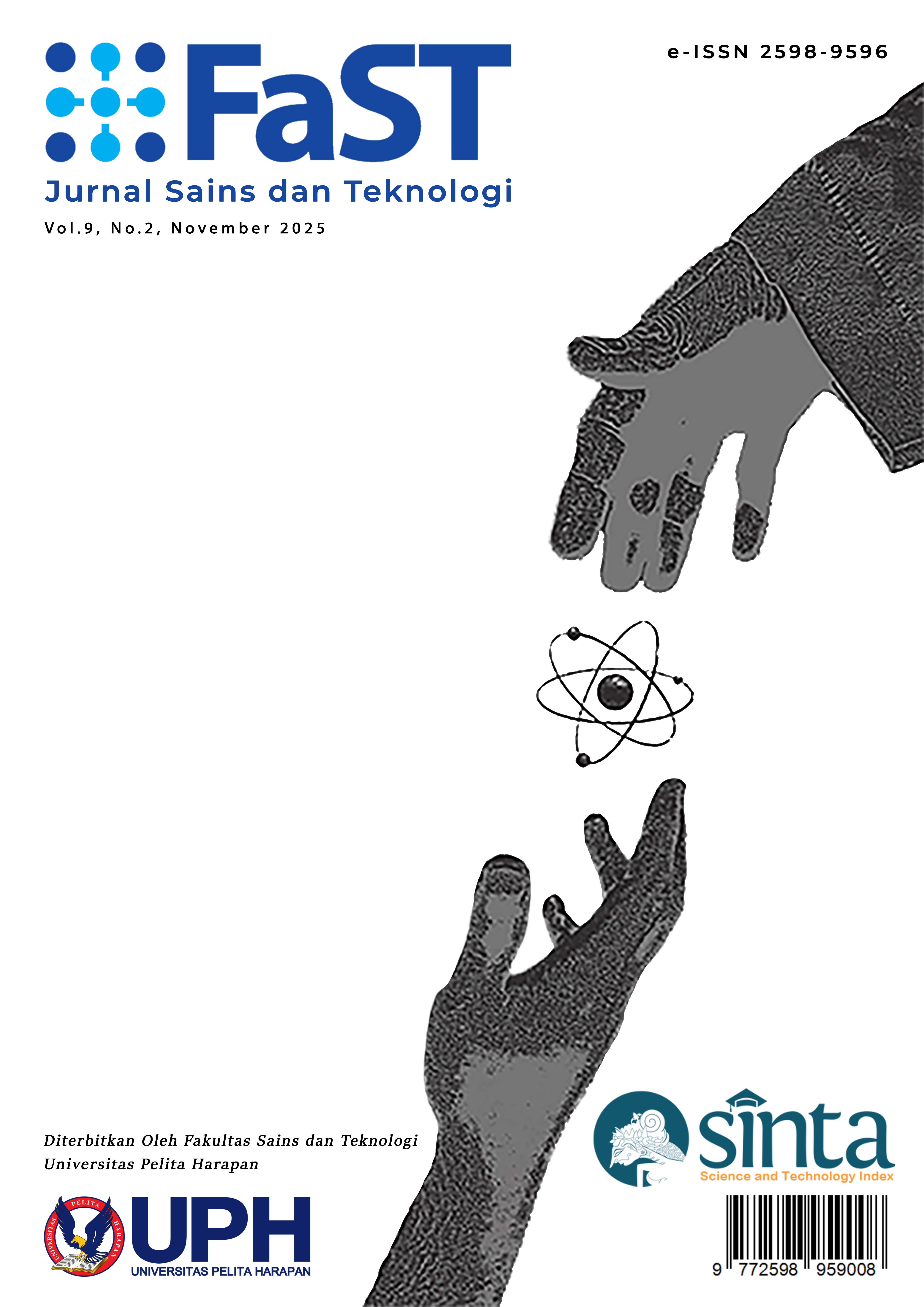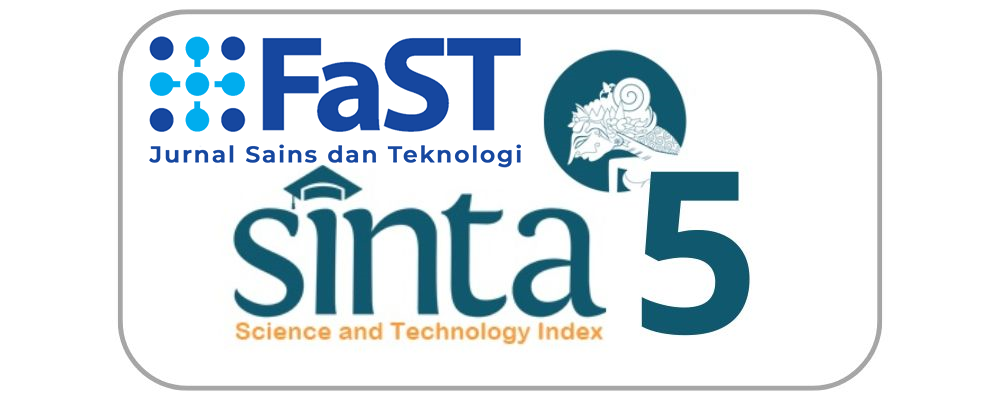High-Reliability Teams at Sea: The Role of Psychological Safety, Human–System Interaction, and Workload in Error Reporting Behavior among Offshore Workers
DOI:
https://doi.org/10.19166/jstfast.v9i2.10416Keywords:
error reporting, human system interaction, offshore workers, psychological safety, workload, sustainable industrializationAbstract
Offshore oil and gas operations demand high reliability under extreme physical and psychological conditions. Despite robust engineering systems, many accidents still stem from human and organizational factors. This study examines the role of psychological safety, human–system interaction, and workload in predicting error reporting behavior among offshore workers. A quantitative, cross-sectional design was applied using validated self-report scales: the Psychological Safety Scale (Edmondson), System Usability Scale (SUS), NASA Task Load Index (NASA-TLX), and an adapted Error Reporting Behavior Scale. Data were collected from 188 offshore workers in Indonesia through online questionnaires. Multiple linear regression analysis revealed that psychological safety (β = .38, p < .001) and human–system interaction (β = .27, p < .001) significantly and positively predicted error reporting behavior, while workload showed a significant negative effect (β = −.23, p < .001). The model accounted for 36% of the variance in error reporting (R² = .36). These findings indicate that workers are more likely to report errors when they feel safe to speak up, perceive systems as user-friendly, and experience manageable workloads. The study highlights the need for integrated interventions that simultaneously foster psychological safety, ergonomic system design, and balanced workload management to enhance proactive safety behavior in offshore environments. This research contributes to the intersection of industrial–organizational psychology and human factors engineering, emphasizing that safety performance in high-reliability organizations relies on both social and technological resilience. These findings align with Sustainable Development Goal 9 (Industry, Innovation and Infrastructure), reinforcing that resilient and sustainable industrial systems require the integration of human factors into safety management and system design.
References
Amici, B., & Farnese, M. L. (2024). Learning to manage the unexpected: Applying Weick and Sutcliffe’s HRO principles to oil tanker accidents. Disaster Prevention and Management: An International Journal, 33(2), 98–113. https://doi.org/10.1108/DPM-03-2023-0065
Antonsen, S., Nilsen, M., & Almklov, P. G. (2017). Regulating the intangible: Searching for safety culture in the Norwegian petroleum industry. Safety Science, 92, 232–240. https://doi.org/10.1016/j.ssci.2016.10.013
Brooke, J. (1996). SUS—A quick and dirty usability scale. In Usability evaluation in industry (pp. 189–194). Taylor & Francis.
Bye, R. J., Aalberg, A. L., & Røyrvik, J. O. D. (2020). What we talk about when we talk about HSE and culture: A mapping and analysis of the academic discourses. Safety Science, 129, 104846.https://doi.org/10.1016/j.ssci.2020.104846
Carayon, A., Tortel, E., Martinie, C., Palanque, P., Morey, F. X. G., & Manresa-Yee, C. (2025, September). Accounting both safety and performance for goal-directed training and rehabilitation: A generic tool-supported multimodal approach. In IFIP Conference on Human-Computer Interaction (pp. 177–201). Cham: Springer Nature Switzerland. https://doi.org/10.1007/978-3-032-05005-2_10
Casey, T. W., Hu, X., Reid, C., Tran, P. A., & Guldenmund, F. W. (2022). Rolling up our sleeves and pulling up our socks: A critical review of safety culture definitions and measures, and innovative ways to move the field forward. In Handbook of research methods for organisational culture (pp. 291–311). https://doi.org/10.4337/9781788976268.00027
Conchie, S. M., & Donald, I. J. (2009). The moderating role of safety-specific trust on the relation between safety-specific leadership and safety citizenship behaviors. Journal of Occupational Health Psychology, 14(2), 137–147. https://psycnet.apa.org/doi/10.1037/a0014247
de Almeida, A. G., & Vinnem, J. E. (2020). Major accident prevention illustrated by hydrocarbon leak case studies: A comparison between Brazilian and Norwegian offshore functional petroleum safety regulatory approaches. Safety Science, 121, 652–665. https://doi.org/10.1016/j.ssci.2019.08.028
Edmondson, A. (1999). Psychological safety and learning behavior in work teams. Administrative Science Quarterly, 44(2), 350–383. https://doi.org/10.2307/2666999
Faul, F., Erdfelder, E., Lang, A. G., & Buchner, A. (2007). G*Power 3: A flexible statistical power analysis program for the social, behavioral, and biomedical sciences. Behavior Research Methods, 39(2), 175–191. https://doi.org/10.3758/BF03193146
Ferguson, J. J., Fritsch, A., Rentmeester, C., Clewley, D., & Young, J. L. (2023). Feeling exhausted: How outpatient physical therapists perceive and manage job stressors. Musculoskeletal Care, 21(3), 845–855. https://doi.org/10.1002/msc.1761
Fleming, M., Harvey, K., & Bowers, K. C. (2022). Development and testing of a nuclear regulator safety culture perception survey. Safety Science, 153, 105792. https://doi.org/10.1016/j.ssci.2022.105792
Frazier, M. L., Fainshmidt, S., Klinger, R. L., Pezeshkan, A., & Vracheva, V. (2017). Psychological safety: A meta‐analytic review and extension. Personnel Psychology, 70(1), 113–165. https://doi.org/10.1111/peps.12183
Ghaleh, S., Omidvari, M., Nassiri, P., Momeni, M., & Lavasani, S. M. M. (2019). Pattern of safety risk assessment in road fleet transportation of hazardous materials (oil materials). Safety Science, 116, 1–12. https://doi.org/10.1016/j.ssci.2019.02.039
Haavik, T. K., Kongsvik, T., & Vigen, M. (2023). Risk in transit: A case study of the introduction of a new risk definition for risk management in the Norwegian petroleum industry. Journal of Risk Research, 26(11), 1244–1262. https://doi.org/10.1080/13669877.2023.2270663
Hart, S. G. (2006, October). NASA-task load index (NASA-TLX); 20 years later. In Proceedings of the Human Factors and Ergonomics Society Annual Meeting (Vol. 50, No. 9, pp. 904–908). Sage CA: Los Angeles, CA: Sage Publications. https://doi.org/10.1177/154193120605000909
Hart, S. G., & Staveland, L. E. (1988). Development of NASA-TLX (Task Load Index): Results of empirical and theoretical research. In Advances in psychology (Vol. 52, pp. 139–183). North-Holland. https://doi.org/10.1016/S0166-4115(08)62386-9
Hasan, R., Chatwin, C., & Sayed, M. (2020). Examining alternatives to traditional accident causation models in the offshore oil and gas industry. Journal of Risk Research, 23(9), 1242–1257. https://doi.org/10.1080/13669877.2019.1673796
Jamil, Z., Nordin, S. M., Miraj, M., Alqahtani, M., Shaik, R. A., Akhtar, S., & Nizam Isha, A. S. (2025). Sustainable safety practices and hazard management in the oil and gas industry: An HSE perspective. Frontiers in Public Health, 13, 1611106. https://doi.org/10.3389/fpubh.2025.1611106
Karsh, B. T., Waterson, P., & Holden, R. J. (2014). Crossing levels in systems ergonomics: A framework to support ‘mesoergonomic’ inquiry. Applied Ergonomics, 45(1), 45–54. https://doi.org/10.1016/j.apergo.2013.04.021
Kasyk, L., Wolnowska, A. E., Pleskacz, K., & Kapuściński, T. (2023). The analysis of social and situational systems as components of human errors resulting in navigational accidents. Applied Sciences, 13(11), 6780. https://doi.org/10.3390/app13116780
Lezdkalne, J. (2025). Integrating human factors into occupational accident investigation: A literature review of methodologies and their applications. Agronomy Research, 23, 93 - 108. https://doi.org/10.15159/AR.25.036
Maternová, A., Materna, M., Dávid, A., Török, A., & Švábová, L. (2023). Human error analysis and fatality prediction in maritime accidents. Journal of Marine Science and Engineering, 11(12), 2287. https://doi.org/10.3390/jmse11122287
Mearns, K., & Yule, S. (2009). The role of national culture in determining safety performance: Challenges for the global oil and gas industry. Safety Science, 47(6), 777–785. https://doi.org/10.1016/j.ssci.2008.01.009
Nahrgang, J. D., Morgeson, F. P., & Hofmann, D. A. (2011). Safety at work: A meta-analytic investigation of the link between job demands, job resources, burnout, engagement, and safety outcomes. Journal of Applied Psychology, 96(1), 71–94. https://doi.org/10.1037/a0021484
Newman, A., Donohue, R., & Eva, N. (2017). Psychological safety: A systematic review of the literature. Human Resource Management Review, 27(3), 521–535. https://doi.org/10.1016/j.hrmr.2017.01.001
Nunnally, J. C., & Bernstein, I. H. (1994). The assessment of reliability. In Psychometric theory (3rd ed., pp. 248–292). McGraw-Hill.
Ofori, E. K., Aram, S. A., Saalidong, B. M., Gyimah, J., Niyonzima, P., Mintah, C., & Ahakwa, I. (2023). Exploring new antecedent metrics for safety performance in Ghana’s oil and gas industry using partial least squares structural equation modelling (PLS-SEM). Resources Policy, 81, 103368. https://doi.org/10.1016/j.resourpol.2023.103368
Parkes, K., Hodkiewicz, M., & Morrison, D. (2012). The role of organizational factors in achieving reliability in the design and manufacture of subsea equipment. Human Factors and Ergonomics in Manufacturing & Service Industries, 22(6), 487–505. https://doi.org/10.1002/hfm.20289
Patterson, R. E. (2017). Intuitive cognition and models of human–automation interaction. Human Factors, 59(1), 101–115. https://doi.org/10.1177/0018720816659796
Probst, T. M., Goldenhar, L. M., Byrd, J. L., & Betit, E. (2019). The Safety Climate Assessment Tool (S-CAT): A rubric-based approach to measuring construction safety climate. Journal of Safety Research, 69, 43–51. https://doi.org/10.1016/j.jsr.2019.02.004
Rajapakse, A., & Emad, G. R. (2025). Are “doubts related to work procedures” the enigma behind accidents? A sociocultural perspective from the maritime industry. Australian Journal of Maritime & Ocean Affairs, 1–26. https://doi.org/10.1080/18366503.2025.2488088
Read, G. J., Shorrock, S., Walker, G. H., & Salmon, P. M. (2021). State of science: Evolving perspectives on “human error.” Ergonomics, 64(9), 1091–1114. https://doi.org/10.1080/00140139.2021.1953615
Rivera, G., Yunusa-Kaltungo, A., & Labib, A. (2021, July). A hybrid approach for an oil and gas company as a representative of a high reliability organization. In Safety and Reliability (Vol. 40, No. 3, pp. 130–156). Taylor & Francis. https://doi.org/10.1080/09617353.2021.1920299
Roelen, C. A., van Hoffen, M. F., Waage, S., Schaufeli, W. B., Twisk, J. W., Bjorvatn, B., & Pallesen, S. (2018). Psychosocial work environment and mental health-related long-term sickness absence among nurses. International Archives of Occupational and Environmental Health, 91(2), 195–203. https://doi.org/10.1007/s00420-017-1268-1
Salmon, P. M., Carden, T., & Hancock, P. A. (2021). Putting the humanity into inhuman systems: How human factors and ergonomics can be used to manage the risks associated with artificial general intelligence. Human Factors and Ergonomics in Manufacturing & Service Industries, 31(2), 223–236. https://doi.org/10.1002/hfm.20883
Simonova, N. N., & Korneeva, Y. A. (2024, September). The functional states’ dynamics during the shift period of oil exploration workers with different work and rest regimes as a marker of their psychological safety. In SPE International Conference and Exhibition on Health, Safety, Environment, and Sustainability (p. D031S029R004). SPE. https://doi.org/10.2118/220482-MS
Stanton, N. A., Salmon, P. M., Rafferty, L. A., Walker, G. H., Baber, C., & Jenkins, D. P. (2017). Human factors methods: A practical guide for engineering and design. CRC Press. https://doi.org/10.1201/9781315587394
https://doi.org/10.4324/9781351156325
Wang, B., Wu, C., Reniers, G., Huang, L., Kang, L., & Zhang, L. (2018). The future of hazardous chemical safety in China: Opportunities, problems, challenges and tasks. Science of the Total Environment, 643, 1–11. https://doi.org/10.1016/j.scitotenv.2018.06.174
Whitacre, P., Wullert, K., & National Academies of Sciences, Engineering, and Medicine. (2025, May). Job burnout: Consequences for individuals, organizations, and equity. In Impact of burnout on the STEMM workforce: Proceedings of a workshop. National Academies Press (US). https://doi.org/10.17226/29078
Willis, S., Holman, D., Clarke, S., & Hartwig, A. (2024). Understanding the regulator–regulatee relationship for developing safety culture. Risk Analysis, 44(4), 972–990. https://doi.org/10.1111/risa.14214
Zara, J., Nordin, S. M., & Isha, A. S. N. (2023). Influence of communication determinants on safety commitment in a high-risk workplace: A systematic literature review of four communication dimensions. Frontiers in Public Health, 11, 1225995. https://doi.org/10.3389/fpubh.2023.1225995
Zhan, X., Wu, J., & Jie, Y. (2025). How and when psychological safety impacts employee innovation: The roles of thriving at work and regulatory focus. Current Psychology, 44(5), 3736–3746. https://doi.org/10.1007/s12144-025-07348-3
Zhang, J., Fu, J., Hao, H., Fu, G., Nie, F., & Zhang, W. (2020). Root causes of coal mine accidents: Characteristics of safety culture deficiencies based on accident statistics. Process Safety and Environmental Protection, 136, 78–91. https://doi.org/10.1016/j.psep.2020.01.024
Downloads
Published
Issue
Section
License
Copyright (c) 2025 Chrysan Gomargana, Kevin Aprilio Wibowo, Jack Widjajakusuma

This work is licensed under a Creative Commons Attribution-ShareAlike 4.0 International License.
“Authors who publish with this journal agree to the following terms:
1) Authors retain copyright and grant the journal right of first publication with the work simultaneously licensed under a Creative Commons Attribution License (CC-BY-SA 4.0) that allows others to share the work with an acknowledgement of the work's authorship and initial publication in this journal.
2) Authors are able to enter into separate, additional contractual arrangements for the non-exclusive distribution of the journal's published version of the work (e.g., post it to an institutional repository or publish it in a book), with an acknowledgement of its initial publication in this journal.
3) Authors are permitted and encouraged to post their work online (e.g., in institutional repositories or on their website). The final published PDF should be used and bibliographic details that credit the publication in this journal should be included.”



